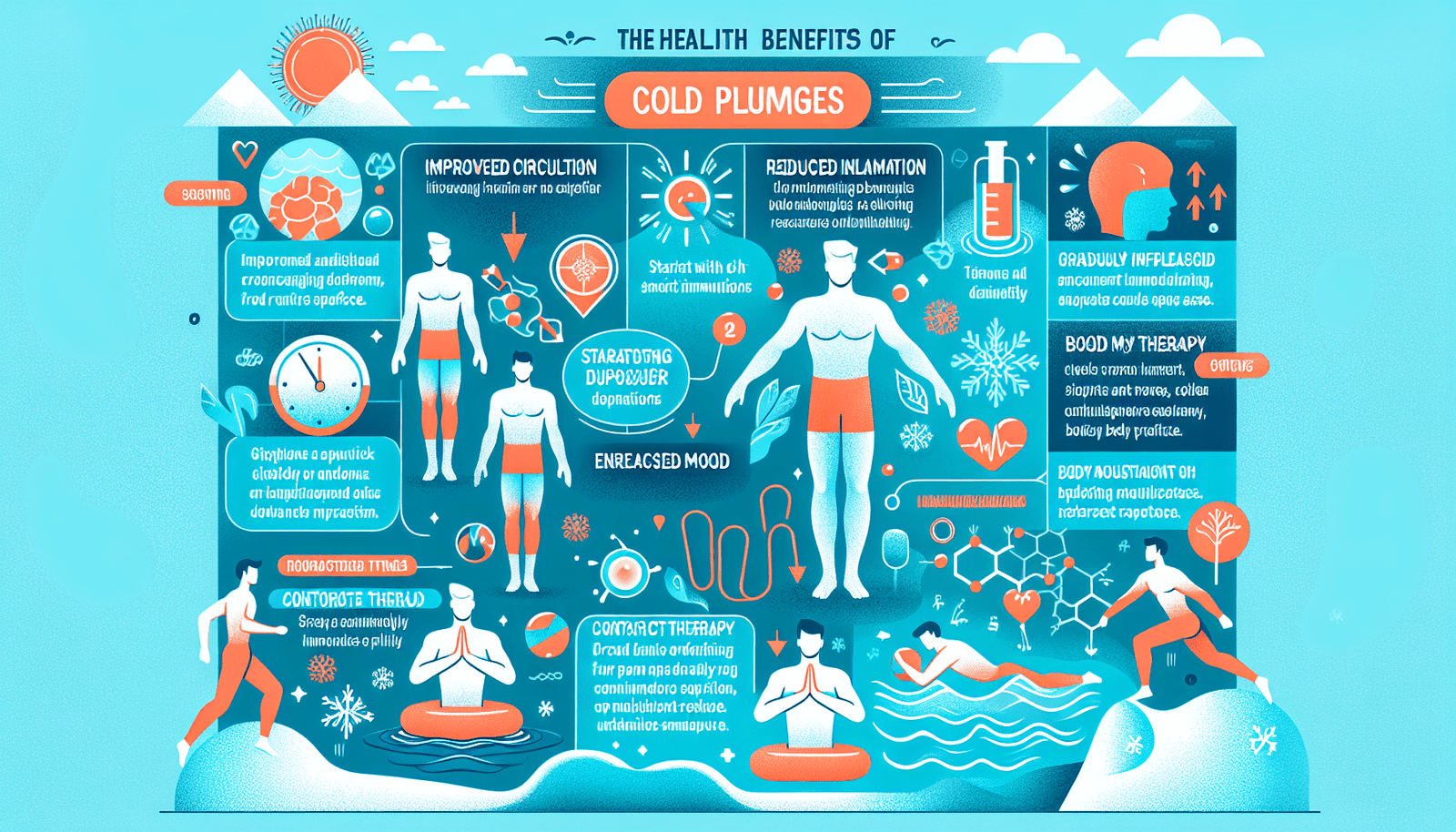Whether you’re a seasoned ice swimmer or just curious about the invigorating effects of a chilly dip, maximizing the health benefits of cold plunges is essential. In this article, we will explore and share seven practical tips that can help you make the most out of your cold water immersion experiences. From regulating your breathing to optimizing recovery, these tips will ensure that you not only enjoy the exhilaration of a cold plunge but also reap its numerous health benefits. So, grab your towel and get ready to dive into the world of cold plunges!

1. Start with a gradual approach
When it comes to cold plunges, it’s important to ease into it to avoid shock to your system. Start with shorter durations and gradually increase the amount of time you spend in the cold water. This allows your body to slowly adapt to the colder temperatures without experiencing any discomfort.
Additionally, lower the temperature of the water gradually. Begin with a slightly cooler temperature and slowly decrease it over time. This will help your body adjust and prevent any sudden temperature changes that may be too intense for you.
Remember, the key is to listen to your body and go at your own pace. Pushing yourself too hard or rushing into longer durations and colder temperatures can lead to discomfort and potential health risks.
2. Be mindful of your body
Your body is unique, and it’s important to pay close attention to its response during a cold plunge. Everyone’s tolerance for cold is different, so it’s crucial to know your limits and not push yourself beyond what feels comfortable.
If at any point during the plunge you experience discomfort, dizziness, or any other adverse effects, stop immediately. Your body is signaling that it has reached its limit, and it’s important to respect and listen to those signals.
By being in tune with your body, you can ensure a safe and enjoyable cold plunge experience.
3. Stay hydrated
Hydration is key before and after a cold plunge. Make sure to drink water before your plunge to ensure your body is properly hydrated. Cold water immersion can cause your body to lose fluids, so it’s important to replenish them afterwards as well.
Avoid consuming caffeine and alcohol before plunging, as they can dehydrate your body and hinder your ability to acclimate to the cold.
Consider replenishing electrolytes with sports drinks or coconut water. These beverages contain essential minerals that can help your body recover and stay hydrated during and after the cold plunge.
4. Use proper breathing techniques
Breathing plays a crucial role in managing your body’s response to cold plunges. Before entering the cold water, practice deep breathing to help calm your mind and prepare your body for the plunge.
During the plunge, take slow and controlled breaths. Focus on inhaling through your nose and exhaling through your mouth. This helps regulate your heart rate and keeps you focused and calm during the experience.
One important aspect of breathing during a cold plunge is to concentrate on exhaling fully. This helps release tension and allows for a more relaxed and enjoyable plunge.

5. Take care of your skin
Cold water can be harsh on the skin, so it’s important to take proper care of it before and after a cold plunge. Moisturize your skin with a hydrating lotion or oil before the plunge to create a barrier and prevent excessive drying.
After the plunge, avoid taking hot showers. Hot water can further dry out your skin and strip away its natural oils. Instead, opt for lukewarm water and use a gentle cleanser to maintain the skin’s moisture balance.
Additionally, protect your skin from extreme temperatures. If you’re spending time outside after the plunge, apply sunscreen to shield your skin from the sun’s harmful rays and wear appropriate clothing to protect yourself from cold winds.
6. Incorporate contrast therapy
Contrast therapy involves alternating between hot and cold plunges to maximize the benefits to your body. Start and end your cold plunge session with a cold plunge for best results.
You can follow a specific time ratio, such as 3:1, where you spend three minutes in a cold plunge followed by one minute in a hot plunge. This alternating temperature exposure can help improve circulation, reduce inflammation, and provide a range of other health benefits.
Experiment with different durations and ratios to find what works best for your body and preferences. Remember to always listen to your body and adjust accordingly.
7. Seek guidance if needed
If you have any underlying health conditions or concerns about cold plunges, it’s always wise to consult with a healthcare professional before diving in. They can provide guidance tailored to your specific needs and ensure the practice is safe for you.
Joining a cold plunge community can also be beneficial. The support and advice from fellow enthusiasts can offer motivation, tips, and insights into enhancing your cold plunge experience.
Consider working with a certified cold plunge instructor if you want to further optimize your practice. They can provide personalized guidance, create customized plunge routines, and help you maximize the health benefits of your cold plunges.
Remember, cold plunges are meant to be invigorating and beneficial to your health, so be sure to approach them with caution, mindfulness, and respect for your body’s limits. Enjoy the journey of exploring the benefits of cold plunges and embrace the wonders they can bring to your overall well-being.

